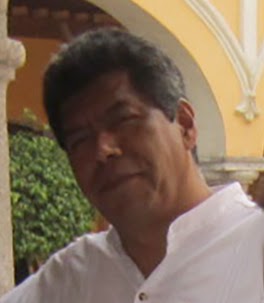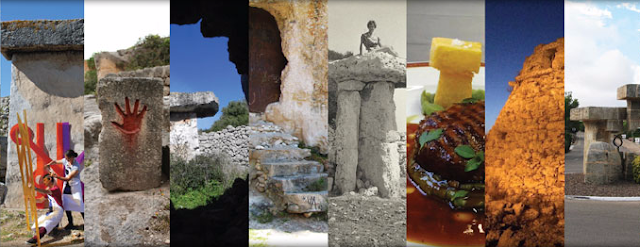INTERVIEW WITH Carlos Montero Pantoja
*This is a translation of the original interview in Spanish
Carlos Montero Pantoja is a professor of Cultural Heritage in Benemérita Universidad Autónoma de Puebla (Mexico) in the Master of Built Heritage at the Architecture School. He has a prolific publications record, both technic and divulgative, about Puebla, a World Heritage city.
Carlos Montero Pantoja is a professor of Cultural Heritage in Benemérita Universidad Autónoma de Puebla (Mexico) in the Master of Built Heritage at the Architecture School. He has a prolific publications record, both technic and divulgative, about Puebla, a World Heritage city.
Hi Carlos! In our previous interview with Jordi
Tresserras we focussed on tourism, so we are going to start over from there on.
Do you think that tourists’ interests prevail over those of the inhabitants of
a World Heritage city when activities affecting urban landscape take place?
Definitely.
In Mexico, the Development National Plan (a planning device
which guides all strategies, policies and actions of the country’s entities)
considers (all types of) heritage as a resource to promote tourism and, therefore, actions are associated with
the corresponding sectors, primarily Tourism, which, by the way, does not assess
it, not even consent it as heritage. In such a sector only tour operators do
participate and, exceptionally, they assist to the heritage sector in order to
be provided with information which could be used for market promotion (not
diffusion).
Occasionally, this management of World Heritage cities
produces conflicts with the population. Do you consider that a higher participation in decision-taking processes within heritage management in these
cities could add any solution to these conflicts?
Of
course I do. Social participation is
essential. The situation of conflict expressed in the outcries and violence
lived in Mexico nowadays is the result, among other causes, of the distance
between authorities and citizens, and of the differences triggered by that distance
because those who rule assume that, in a virtual imaginary, the view they are
building is what society needs, and thus, they create real stages derived from
virtual views. Simultaneously, the reality experienced by citizens is
different: asymmetrical, antidemocratic, stark, violent, etc. -and for all that
there are not actions. In this context, heritage, as women and poor people,
among others, are vulnerable to the actions taken by those who decide.
Conflicts
have reached extreme situations in where those who take decisions carry out
prefigured projects without taking into account heritage, let alone citizens’
opinions and their own private interests. If citizens partake in claims,
they are imprisoned or murdered.
Today,
in Mexico, protests have not received a response. Society does not have
interlocutors or mediators.
There are cities in which these participation
processes have happened when changes were been undertaken, although the results
have not always been those expected by technicians. Is the implementation of a
legal procedure enough to assure the participation of the civil community in the
decision-taking process of the activities that affect heritage, and thus, in
their relationship with the latter? To what extent society is allowed to
take decisions when there are technique elements which clearly produce
conflicts and, however, are needed as well for the conservation of the affected asset?
All
cities in Mexico have implemented ways to allow citizens participation. The
problem is that they are part of the structure itself of those taking
decisions. That is to say, in Mexico, all projects have passed through the
entities of population enquiry. In other words, legally speaking, there was participation. These operational devices are carried out to the letter.
These
entities use to comprise at least one technician, and, eventually, they
can send a project to the outstanding
technicians but not with the aim of taking into account their professional
opinion, but aiming to have an official letter of the mailing of the project and
an official document that attests that the latter has received it; with those details the official part is
covered.
I
consider (as many specialists agree with) that it must exist a group to manage
heritage. If we think of it as social and with honorific roles, it will be
difficult because it would lack sources to operate. We have proposed it to be
intermediate, in other words, constituted by university students and supported
by universities.
There
are successful experiences when those who take decisions allow and include
citizens’ opinion and, furthermore, they generate structures to back it.
One of the main current conflictive elements in Mexico
in this sense is the concept of ‘public utility’. What is the meaning of this
within the Mexican Republic laws? Is its real application a way to defend
citizens’ interests?
Public
Utility is the more efficient operational device of those who take decisions
because they found the way to set the word ‘public utility’ in all their
actions. Heritage conservation is of public utility but it is also the widening
of a route (it does not matter whether it passes over heritage sites,
intangible places and/or private property), a bridge, water works… And all you
can imagine. It is not coincidental that projects tend to begin with the phrase
‘It is of public utility’.
Therefore,
I claim that the concept of public utility, which should be applied to defend
society and its heritage, acts with impunity against society.
Finally, we know that you take into account outreach and, among other activities, you participate in radio
programmes. Which city problems are more commonly heard by you from your
interviewees? Do you believe that they are problems which could be solved by
means of population participation in decision-taking process?
The
more frequent problems of the population are:
- Insecurity but not regarded as a matter of ‘cops and robbers’ but as the impossibility of having access to essential sets and services such as employment (for instance, when a citizen finish his/her career is an insure person because he/she does not have a job but there is no certainty of finding it either), a house, a living city (this is an aspiration), an inhabitable heritage with entertainment and cultural vitality, etc.
- Day-to-day problems, much of which derives from insecurity, for example, poverty at many different levels: economic, cultural, values poverty which, in turn, provokes
- Asymmetry in the same topics whose manifestation is noticed in the cities with the presence of unliveable ‘room’ sites, abandoned and deteriorated heritage…
- Authorities’ corruption
- Impunity of those who commit crimes




Comentarios
Publicar un comentario